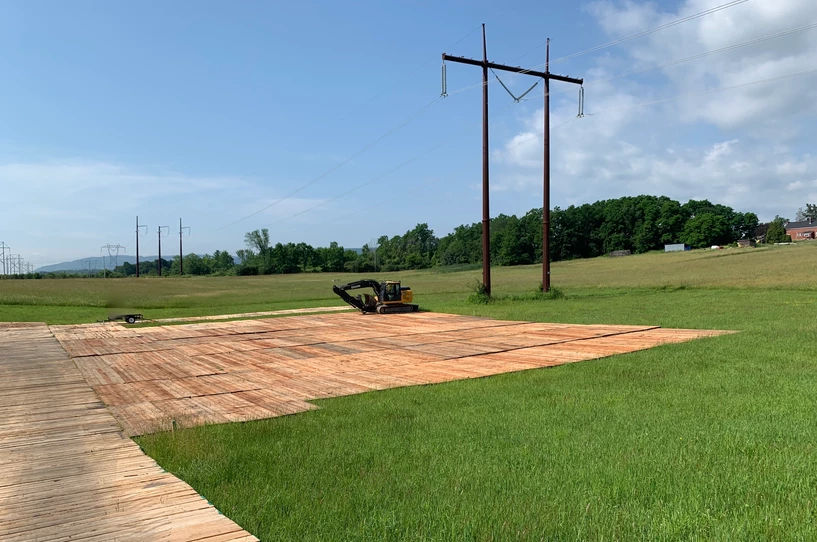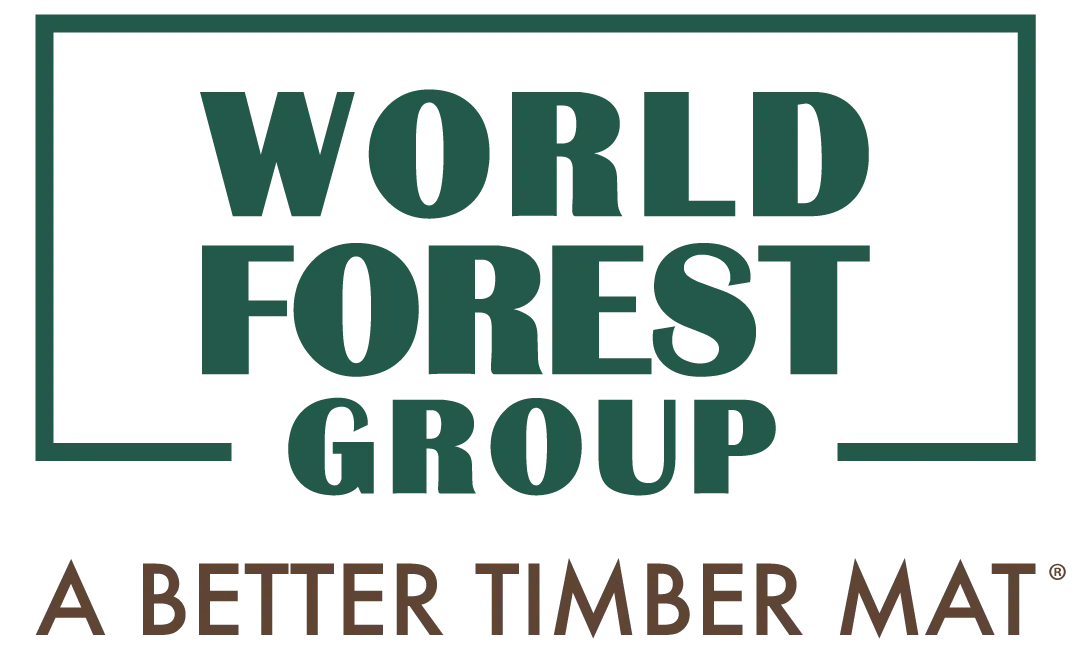Introduction:
Can T-line and renewable contractors get better sleep through better mats?
Developers, owners, contractors, and vendors have operated in a globalized world, with secure and reliable supply chains and stable cost. That world has changed. It’s a deglobalized environment with higher labor costs and an impending infrastructure buildout boom
Supply chains are more fragile, less predictable, and costs are ballooning. Simultaneously, companies are seeking solutions to reduce their carbon footprint.
Everyone’s focused on three questions:
- How can I ensure reliable supply?
- How can I ensure my purchase price doesn’t rise significantly?
- How can I decarbonize my business?
Access mats are highly visible parts of infrastructure projects. Starting projects at lower cost with more sustainable environmental aspects can help get support from key stakeholders like customers and regulators.

Major Forces
Reliable Supply: The days of calling up large vendors and asking for mats to be delivered in a week are over. We have to plan better to reduce supply chain uncertainty and make sure mission-critical goods and services are available at the right cost point.
Rising Purchase Price: Almost every sector of the infrastructure ecosystem is affected by rising inflation. If we focus on purchase price one of two things will happen: Either the price rises, or the quality drops. Buyers have therefore looked at other metrics instead of purchase price.
Decarbonization Efforts: As if reliable supply and rising purchase prices aren’t enough, they are happening while customers, shareholders, and regulatory agencies are demanding decarbonization efforts.
What’s the solution?
Total Cost of Ownership
Combine the correct cost measurement with products that have greater sustainability impact. This combination will help you sleep better.
The right cost metric is Total Cost of Ownership (“TCO”). In the case of access or timber mats, Total Cost of Ownership (TCO) = Purchase Cost + Lifetime Transport Cost + Total Lifespan Cost. A lower TCO is good.
Higher quality often brings the side-benefit of lower Total Cost of Ownership and greater sustainability. The financial return on additional investment for higher quality can be staggeringly high. From a sustainability viewpoint you are being paid to do the right thing.
For example, using a lighter product that lasts longer contributes to better sustainability outcomes. A lighter product means less diesel fuel and carbon emissions. A longer-lived, plantation-grown product means you’ve reduced raw material impacts. (As of last summer, our Eucalyptus timber mats are all carbon neutral.)
One example: Typical transmission line mats (16’x4’x8”) made from Eucalyptus cost a little more ($650/mat) than mixed hardwood mats ($600/mat).

You can load 21 Eucalyptus mats/truck vs. 18 mats/truck for mixed hardwoods. For a $2000 truck move that equates to a savings of ~ $16/mat. Moving mats five times during a year means $80/mat savings…per year, or ~ $240/mat savings over a three-year mat lifetime.

Putting it All Together
The same Eucalyptus mat lasts about 50% longer than a mixed hardwood mat (36-months vs. 24-months) That means the mixed hardwood mat costs about $900, not $600. (You have to buy one and one-half mixed hardwood mats to equal a single Eucalyptus timber mat lifespan.)
Here’s how the numbers add up:
Total Cost of Ownership (TCO) = Purchase Cost + Lifetime Transport Cost + Total Lifespan Cost.
Difference = – $50 purchase price + $238 transport savings + $300 lifespan savings = $488 Eucalyptus savings.
In other words, by investing an extra $50 in a higher quality Eucalyptus mat you get back $238 transport savings + $300 lifespan savings = $538 total savings or about 11X your $50 investment. That’s a LOT better sleep.
There are also large operational real-world savings, which are hard to quantify. One customer said, “All your timbers are square. Every mat is the same. They are strong. They last. You can’t believe how important that is in the field. We don’t have to guess how long the mats will last, or if they will fail and cause a safety incident or delay operations.”
In this challenging supply chain environment, it pays to opt for quality…and sustainability. And, you can get better sleep through better mats.
A nationwide renewable EPC said, “Our experience of the Eucalyptus product…is one of superior quality and longevity when measured against comparable sized mixed hardwood mats… providing us with a lower Total Cost of Ownership (TCO). Additionally, Eucalyptus’s greater strength has allowed for instances when we utilized a single layer of Eucalyptus timber mats for performing critical heavy lifts; performing the same lift on mixed hardwood mats would have required two layers of matting. This effectively reduced the required number of mats to perform the lift by half.”
Summary
Many vendors obsess about making their products better, more affordable, and more responsibly sourced. Developers, owners, EPCs, and contractors can often ask their vendors for innovative ideas. As an example, Eucalyptus timber mats can provide lower total cost of ownership, improved operational results and better sustainability outcomes. And, with a staggeringly high financial payoff. It makes sense for mat sourcing to be a strategic sourcing activity rather than simply a spot-purchase.


